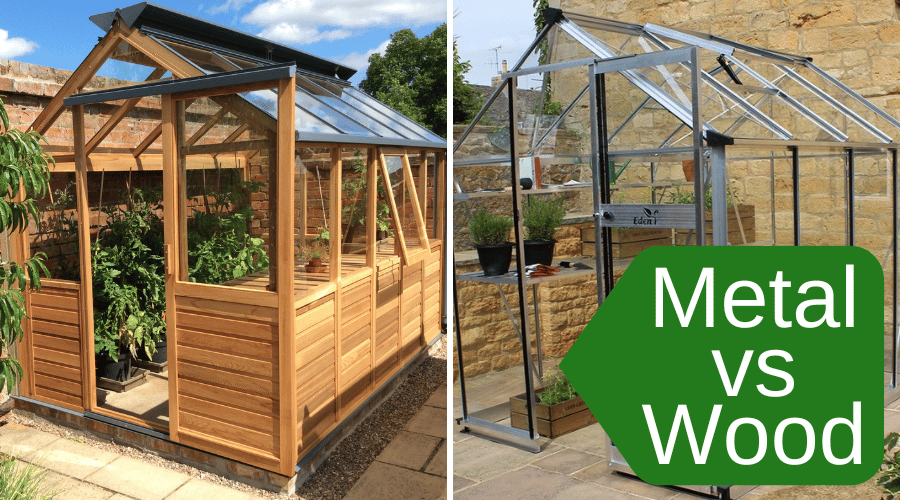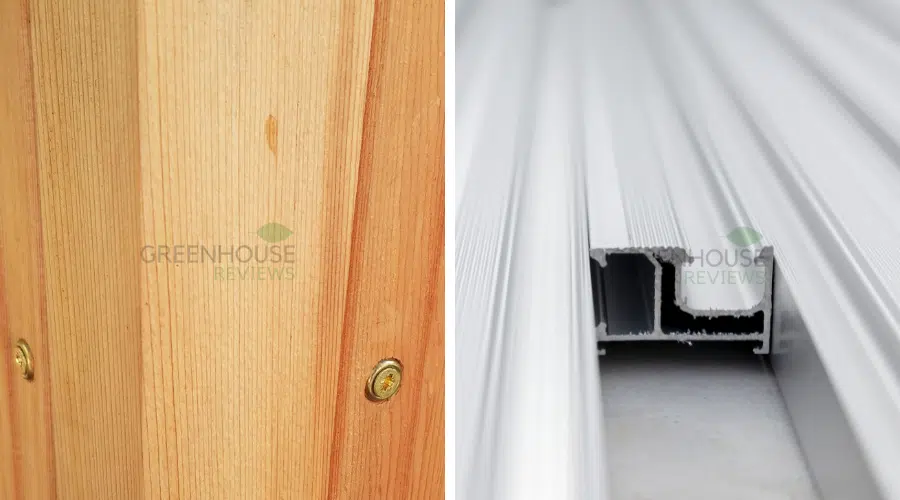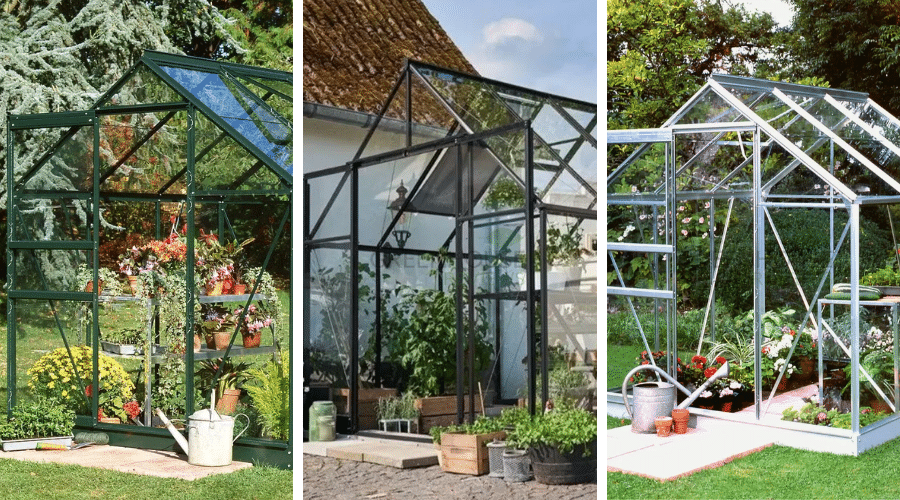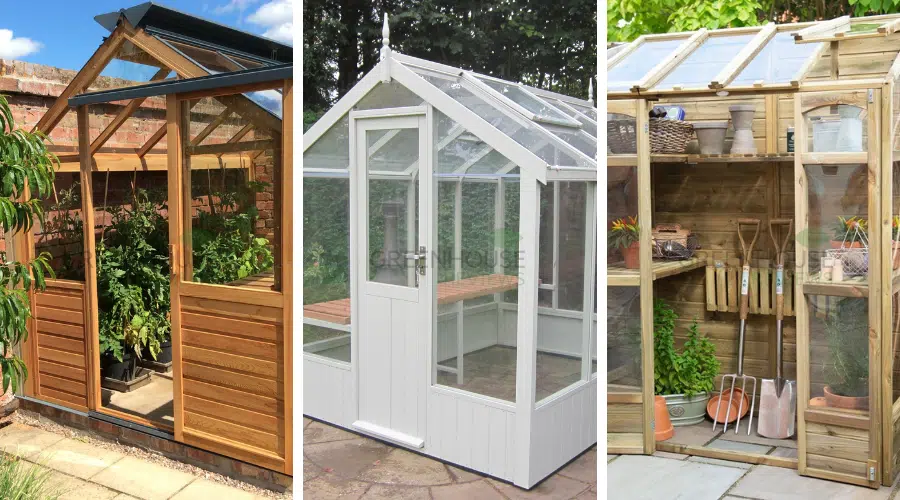
Metal Greenhouses vs Wooden Greenhouses
As avid gardeners, we understand the importance of having a greenhouse in order to expand your growing capabilities. Whether to protect your plants from the colder British weather when sowing them early on in the year, to provide an enriched environment for optimal growth, or to create a tranquil place to potter about, grow and nurture your plants.
One of the first decisions that you'll have to make when buying a new greenhouse is whether to go with a metal-framed or wooden-framed one. Both material types have their own advantages and disadvantages, so it's important to consider your specific needs and preferences before making the decision.
Metal greenhouses are generally considered to be more durable and longer-lasting than wooden ones. They are also resistant to rot, pests, and other forms of damage that can affect the wood itself, being that timber is a natural product. Metal models are also normally less expensive than wooden frames, quite a bit less expensive actually. On top, they're easy to assemble and disassemble yourself as a DIY install job, making them a great option for gardeners who want to be cost-effective and install their own, or have the peace of mind that they can move their greenhouse in the future, whether it be to a different spot in the garden or if moving house.
On the other hand, timber greenhouses have a more traditional and rustic aesthetic that many gardeners find appealing. They also provide excellent insulation, which can help to keep your greenhouse warm during the colder months. Wooden frames are often considered to be more stable than metal frames, mainly due to how thick the framing is, which means that they're less prone to swaying or bending in high-wind areas of the country.
Putting expense aside, one disadvantage of having an outdoor structure made from wood (depending on the wood species used, and the treatment process) is that it may be required to be painted or treated every few years to prevent rot and decay. Metal frames on the other hand require much less maintenance. They don't need to be painted or treated to protect them from the elements, and with the majority being made from anodised aluminium fare very well when exposed outdoors, year after year.

Advantages & Disadvantages of a Metal Greenhouse
Advantages of Metal Greenhouses:
- Durability - Metal is of course a durable material, and as long as the greenhouse you purchase has a decent frame profile and is anchored down, it'll benefit from strong structural integrity.
- Resistance - They're resistant to rot, decay, and insect damage, which makes them a long-lasting option.
- Low Maintenance - Metal frames require very little maintenance, and they don't need to be painted or treated like some models of wooden-framed ones.
- Cost-Effective - In most cases, metal greenhouses cost less than wooden ones when comparing equal sizes, sometimes being as low as 25% of the cost of an equivalent-sized wooden greenhouse - depending on which two brands you're comparing.
- More Choice - There are a lot more metal greenhouse models to choose from, being as there are more UK manufacturers and brands vs wooden counterparts.
- Availability - Metal greenhouses are also usually deliverable very quickly as they're manufactured in bulk and stored in a warehouse, whereas wooden greenhouse crafters may only make them as 'made to order', which increases the time from ordering to delivery quite considerably.
Disadvantages:
- Heat Retention - Metal is a good conductor of heat, which means that it can become quite hot inside a metal greenhouse during the summer. This leads to added difficulty in keeping plants cool during very hot days. On the opposite side, metal also absorbs cold, which makes it harder to keep the inside of the greenhouse warm when growing throughout the autumn and winter months.
- Condensation - Metal frames can lead to condensation inside the greenhouse, which can be problematic for plants. Additionally, condensation leaves moisture on the glazing and frame, which can in turn stimulate moss and algae to grow along the glazing seams.
- Potential Rust - Even if the metal framing overall is resistant to rust, over time it can happen to areas that have been chipped, scratched, or damaged and may need treating with an anti-rust treatment.
- Lightweight - Aluminium is a lightweight metal, which makes installation easier, but means that the greenhouse will have to be sufficiently secured and anchored down to a hardstanding base such as a concrete pad, or slabs for maximum structural integrity.

Advantages & Disadvantages of a Wooden Greenhouse
Advantages:
- Insulation - Wooden frames provide great insulation as wood is a naturally warm material. This can help to keep the greenhouse warmer during the winter and cooler during the summer, making it easier to create a more stable growing environment for your plants.
- Traditional - Wood is the more traditional material for a greenhouse compared to a metal or plastic one.
- Natural Look - Wooden frames tend to blend with the natural surroundings of your garden, such as trees, bushes, and plants, therefore are ideal if you are looking for aesthetics, and a structure that won't look out of place.
- Sturdy & Strong - The framing of a greenhouse made out of wood would usually be much thicker and heavier than a metal one, leading to it being naturally strong and able to withstand harsh wind and rain.
- Easy To Work With - Wooden-framed greenhouses can be modified to suit your needs, being amendable or replaced as needed by a carpenter. Useful for making repairs, extending sections, or making customisations to better suit your needs.
Disadvantages:
- Maintenance - Wooden frames, depending on the timber species and original treatment may require regular maintenance, such as applying a yearly preservative, painting, or staining, in order to protect them from rot, decay, and insect damage.
- Heavy - Wooden frames can be heavy, meaning that they're harder to install by yourself and may require a more significant foundation.
- Cost - Wooden greenhouses are generally more expensive than metal ones, with some brands and models being up to 2x or even 4x the amount vs the same size with a metal frame.
- Made To Order - Some wooden greenhouse brands offer a 'made to order' service only, which means that if you order one, it'll be added to the production queue, crafted bespoke to you, and then delivered. As it's not sitting in a warehouse premade already like the majority of metal greenhouses are, delivery can take months to complete.

The Outcome
It's important to note that both types of frame can be combined with different glazing materials (horticultural glass, toughened glass or polycarbonate glazing) which will have their own properties and costs. Also, whichever material you choose, it is essential to make sure that you have a solid foundation for your greenhouse to be anchored down to, securing it against strong winds or heavy snow loads for the duration of its lifespan.
You can see our other guide for the best floors and bases to put a greenhouse on here.
If you were looking for a specific answer of either "metal is best" or "wooden is best" then our apologies, there is no definite answer... In truth, both materials will allow you to grow a multitude of fruits, veg, herbs, salad, and flower items at home (the most exciting part). So ultimately, the decision between a metal-framed greenhouse vs a wooden-framed greenhouse will come down to two primary things: your personal preference and your budget.
Other than that, if you're looking for a durable, long-lasting, and easy-to-maintain greenhouse, a metal frame might be the best option. But if you're looking for a traditional aesthetic, with warmer vibes and a more natural appearance, then a wooden framed one could be the way to go. Whichever you choose - happy growing!










No comments.